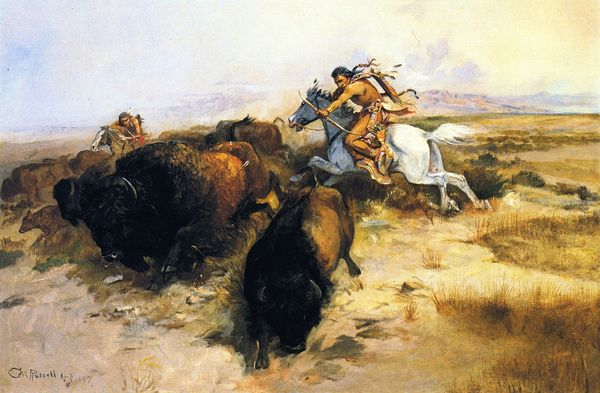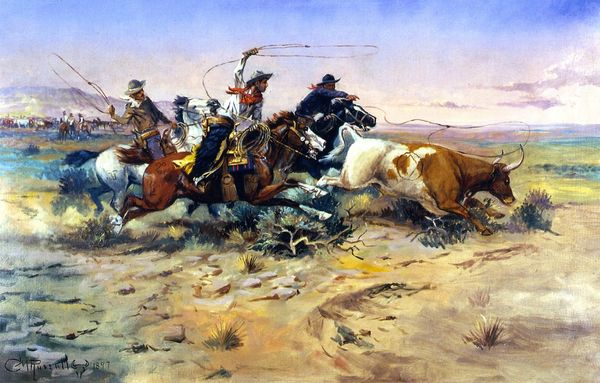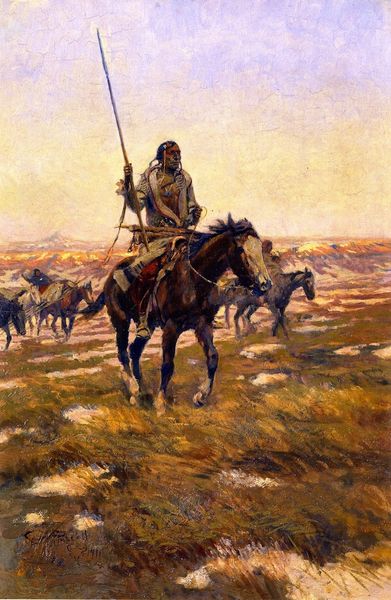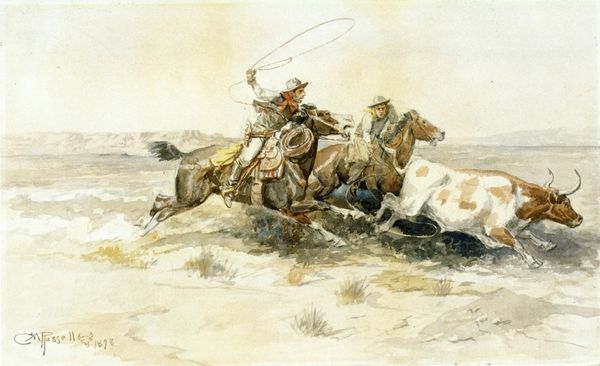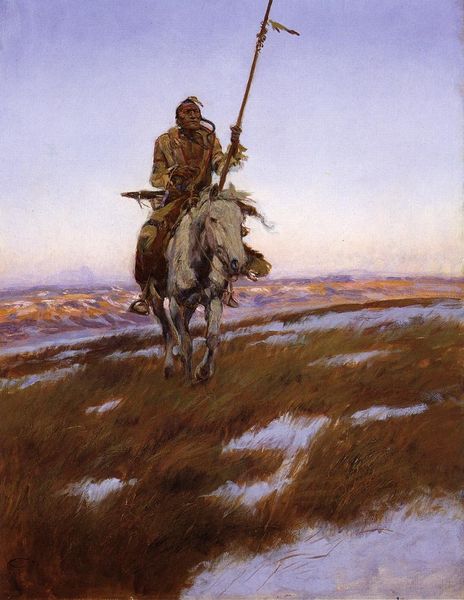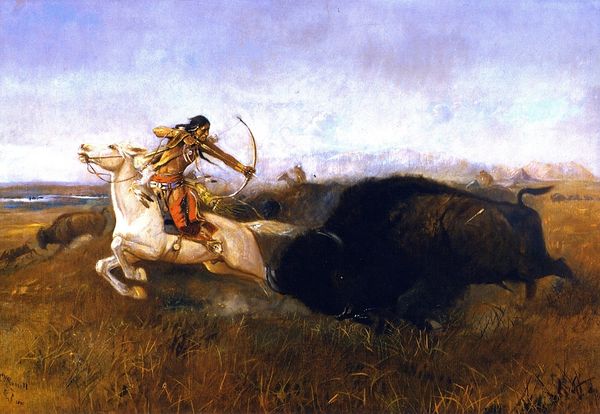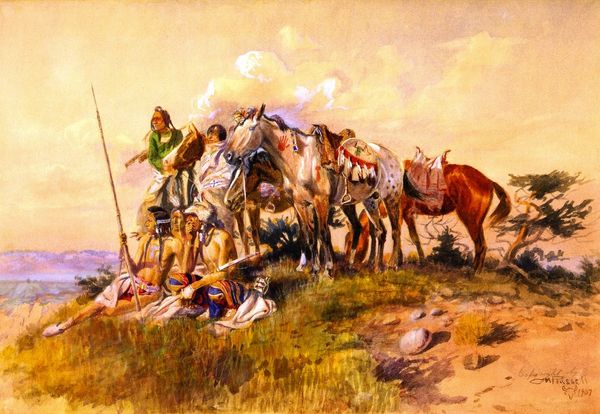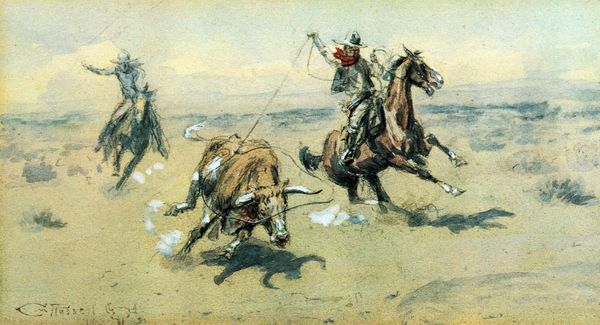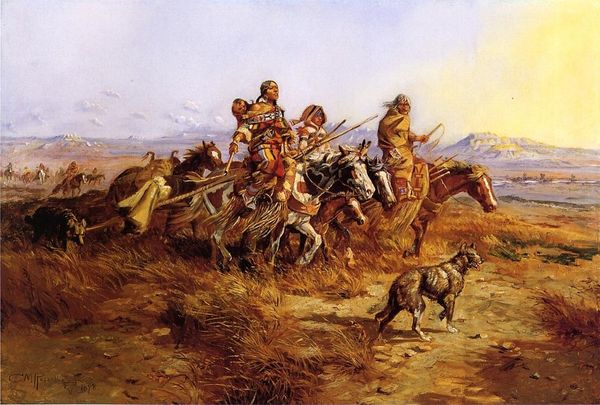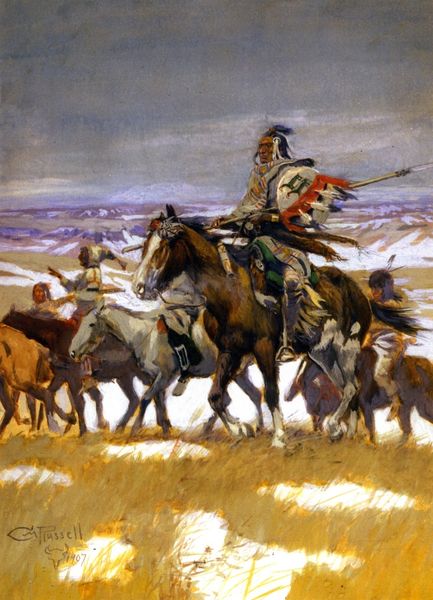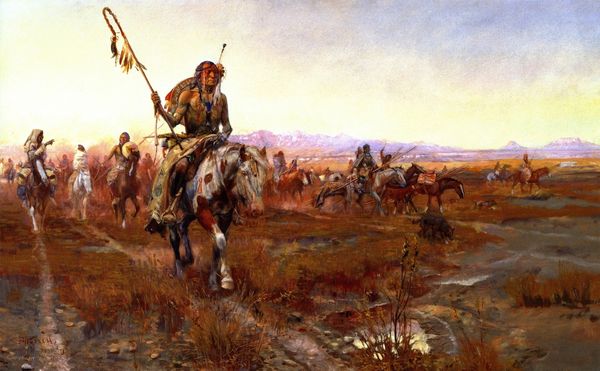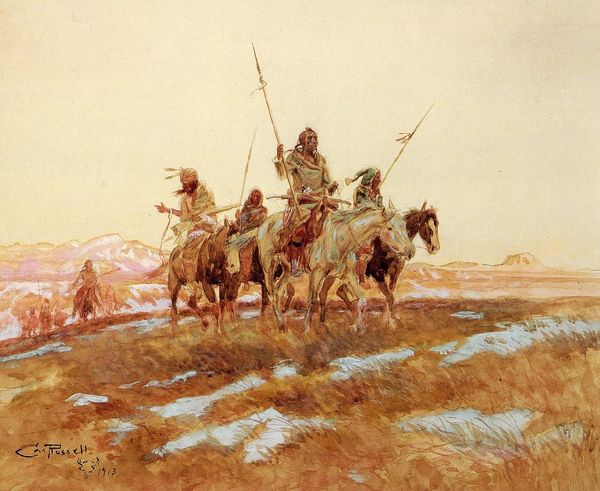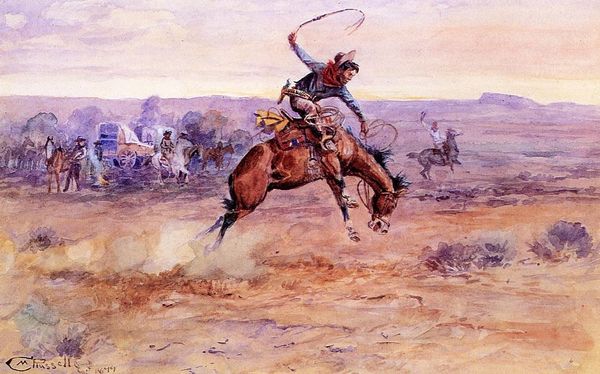
Copyright: Public domain
Editor: This is "OH Cowboys Roping a Steer," an 1892 oil painting by Charles M. Russell. There's a real sense of motion, the horses galloping, the steer trying to escape. It feels like a scene frozen in time, capturing a key element of the mythology of the West. What do you see in this piece? Curator: It's crucial to recognize Russell’s role in constructing and perpetuating narratives of the American West, particularly through a lens that often romanticized and excluded diverse perspectives. While the painting depicts cowboys in action, it subtly reinforces a specific ideology. Who is visible in this heroic narrative, and who is conspicuously absent? Editor: That's a really interesting point. I hadn’t really considered the perspective that this artwork portrays, because I had only looked at what it shows, and not at what's not being represented. Curator: Exactly! Consider how the figure of the cowboy has been utilized politically. Think about the connection to land ownership, dispossession of indigenous populations, and the environmental impact of ranching. Editor: So you're saying that it represents power, that these narratives around the West have real political power, even today. Curator: Absolutely. Russell's technical skill is undeniable, but as viewers, we have to unpack the narrative he’s presenting, analyzing the cultural work this image performs in shaping perceptions of the American West. Do you think appreciating the artistic skill of a work justifies its ideological impact? Editor: That's a tough question. I'm left questioning if we should view these images in a completely new way. Thanks! Curator: My pleasure!
Comments
No comments
Be the first to comment and join the conversation on the ultimate creative platform.
